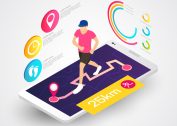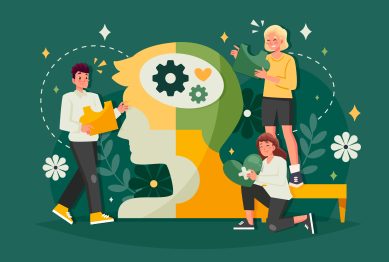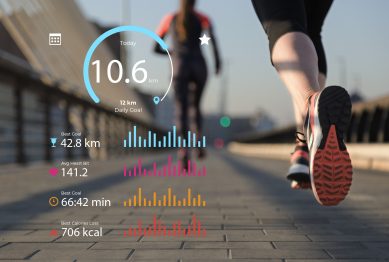Are you stuck in a creative block? Science reveals that taking regular mental breaks can be the key to unlocking your best ideas. Let’s dive into why taking breaks is the ultimate for productivity and creative breakthroughs!

Why Mental Breaks Are Essential for Idea Flow
In today’s fast-paced world, it’s easy to overlook the importance of taking a pause. Whether you’re working on a project or brainstorming your next big idea, constant focus can actually hinder your creative flow. But what if taking a mental break could be the secret ingredient to unleashing your best ideas?
Recent studies have shown that mental breaks are not only good for your well-being, but they also improve cognitive function, enhance creativity, and boost problem-solving abilities. In fact, research indicates that when we step away from a task, our brains go into a state of incubation—processing information in the background, leading to creative insights (Sio & Ormerod, 2009). So, what’s the connection between taking breaks and having your best ideas?
The Science Behind Mental Breaks
Mental breaks work because of the way our brain processes information. When we’re focused on a task for long periods, our brain’s executive function gets fatigued, causing us to hit a productivity wall. This is where mental breaks come in. Research from the University of Illinois found that when workers took brief breaks, they were able to maintain their performance throughout the day, reducing fatigue and enhancing concentration (Berman, Jonides, & Kaplan, 2008).
Additionally, taking breaks has been linked to the process of “restorative attentional capacity,” meaning stepping away allows the brain to replenish its focus. This refreshment lets you come back to your task with renewed vigor and perspective—often resulting in breakthrough ideas.
The Ideal Time for Taking Mental Breaks
Not all breaks are created equal, and timing is everything. Experts suggest that taking a break every 90 minutes is optimal for maintaining mental sharpness and fostering idea generation. This period is aligned with our natural ultradian rhythms, which govern our energy cycles throughout the day. According to cognitive psychology, the brain needs time to reset and recharge before it can perform at its peak again.
While the ideal break timing might vary from person to person, a general rule is: after working continuously for 90 minutes, take a 10-15 minute break. During this time, step away from your workspace, get some fresh air, stretch, or do something enjoyable that isn’t related to your work. This allows your mind to wander, a state known as “incubation,” which can lead to those “aha” moments.
Simple Yet Effective Break Activities to Boost Creativity
If you’re wondering how exactly to use your breaks to boost creativity, here are a few scientifically-backed suggestions:
- Take a Walk: A study by Standford University found that walking can increase creative output by up to 60%. The simple act of walking helps break the mental pattern and stimulates new neural connections (Oppezzo & Schwartz, 2014).
- Power Nap: It might seem counterintuitive, but a quick 10-20 minute nap can refresh the mind, improving memory consolidation and creativity. A study published in Nature Neuroscience suggests that napping enhances creative problem-solving skills (Cohen et al., 2005).
- Meditation and Mindfulness: Spending a few minutes meditating can increase mental clarity, reduce stress, and enhance creativity. Studies have shown that mindfulness can stimulate creative thinking by promoting a relaxed, open-minded state (Zeidan et al., 2010).
- Listen to Music: Taking a break while listening to music can help you relax and boost your creative thinking. Research suggests that listening to music, especially upbeat tunes, can increase dopamine production, which is linked to enhanced creativity (Levitin, 2006).
Mental Breaks and Long-Term Benefits for Your Idea Flow
While short mental breaks can bring immediate results, regular intervals of rest also lead to long-term improvements in creativity and productivity. A study conducted by the University of California concluded that individuals who took consistent mental breaks were better at generating new ideas, as their minds were trained to shift between focused work and rest (Sio & Ormerod, 2009).
Furthermore, by adopting regular breaks into your routine, you’re giving your brain the space it needs to make novel connections and think outside the box. Over time, this will help improve your cognitive flexibility, which is essential for adapting to new challenges and generating fresh ideas.
How to Make Mental Breaks a Habit
If you want to experience the creative benefits of mental breaks, it’s important to make them a consistent part of your routine. Here are a few tips to help you integrate breaks into your workday:
- Set a timer: Use your phone or computer to set reminders every 90 minutes. This simple action helps you remember to take a break and keeps your schedule organized.
- Plan your breaks: Schedule specific activities for your breaks, like walking outside, meditating, or even just grabbing a cup of coffee. Having a go-to break activity can make it easier to relax and recharge.
- Don’t feel guilty: In our productivity-obsessed culture, taking breaks can sometimes feel like a luxury. But embracing breaks as part of your creative process will help you achieve better results in the long run.
Conclusion: Take Breaks, Unlock Ideas
Taking mental breaks is no longer just a wellness trend—it’s a creative necessity. By allowing your brain to rest and recharge, you give yourself the best chance to access new ideas and solve complex problems. Whether it’s a quick walk, a power nap, or just a few minutes of mindfulness, integrating mental breaks into your daily routine is the key to unlocking your creative potential.
References:
- Sio, U. N., & Ormerod, T. C. (2009). Does incubation enhance problem solving? A meta-analytic review. Psychological Bulletin, 135(1), 94-120. Available at: https://psycnet.apa.org (Accessed: 1 August 2025).
- Berman, M. G., Jonides, J., & Kaplan, S. (2008). The cognitive benefits of interacting with nature. Psychological Science, 19(12), 1207-1212. Available at: https://journals.sagepub.com (Accessed: 1 August 2025).
- Oppezzo, M., & Schwartz, D. L. (2014). Give your ideas some legs: The positive impact of walking on creative thinking. Journal of Experimental Psychology: Learning, Memory, and Cognition, 40(4), 1142-1152. Available at: https://psycnet.apa.org (Accessed: 1 August 2025).









